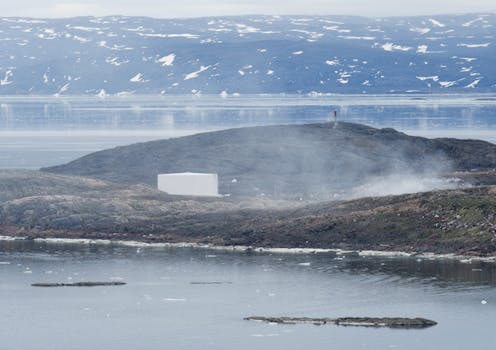
Last year, Harry Towtongie, the mayor of Rankin Inlet, Nunavut, bemoaned how toxic substances released from the community’s dumpsite into the nearby ocean have been harming local food sources. He said the dumpsite was full and overflowing, and must be decommissioned before a new one is built, but financial support is not readily available.
Many First Nations, northern and remote communities face similar struggles as they find it difficult to properly manage municipal solid waste (MSW). They also often lack access to waste diversion programs, such as recycling. Inadequate funding and infrastructure, lack of capacity, unfavourable weather conditions, small population sizes and socio-economic factors add to their woes, making waste management a daunting task. Burning and burying waste have, therefore, become common management practices in these remote communities.
Despite the enormous challenges that communities have been facing, recent research revealed that some First Nations in Western Canada now have access to MSW infrastructure, providing them a potential way out of the waste management crisis.
As a researcher interested in solid waste management in Indigenous and northern communities, I believe that these issues need to be prioritized in policy, research and development discourses to encourage sustained action that protects First Nations from environmental harm and protects the environment as well.
Challenges persist despite community action
Our research on 12 First Nation communities in Western Canada revealed that the majority of them have some solid waste management infrastructure in their communities, including transfer stations and recycling depots, which they had lacked for several years.
These facilities and added infrastructure have enabled many of the communities to pursue waste diversion programs. Heiltsuk Nation, for example, has recycling, composting and reuse programs, and all 12 communities provide household garbage pick-up services for community members.
While the data on community efforts is lacking, the communities we worked with attributed the success of their MSW management programs to community involvement, free and regular residential curbside pickups and their ability to transport their collected waste to regional facilities.
Our research shows that communities have improved on their previously existing MSW management systems, but two communities still operated open dumps or pits, and only one community, Peguis First Nation, had an engineered landfill.
However, challenges with funding remain for all the communities and, without regular and dedicated funding, the programs cannot be sustained.
Extended Producer Responsibility programs
Since the introduction of Extended Producer Responsibility (EPR) programs in Canada, which place responsibility on producers to deal with the end-of-life of products, stewardship organizations in provinces have been collecting and treating products when their life cycles end.
Five of the 12 communities we worked with had signed up for stewardship programs for items like beverage containers, used oil and electronics. Through these programs they did receive some monetary compensation from stewardship organizations such as Multi-Material Stewardship Manitoba, Recycle BC and Alberta Recycling. Nonetheless, this is not representative of many other First Nations communities as there are about 379 First Nations in Western Canada.
A major challenge participants mentioned was their inability to find stewardship organizations to work with. Reasons included an unwillingness of organizations to work with remote and rural communities, a lack of community capacity to comply with EPR program requirements — such as proper handling and storage of materials — and a lack of dedicated staff to handle onerous paperwork.
We found that provincial stewardship organizations don’t discriminate against First Nations on paper and that some stewardship programs are making efforts to work with First Nations. However, their mandates do not specify that they need to work with First Nations, specially those in remote and rural regions.
This is despite the fact that First Nations also pay environmental handling fees or container recycling fees on designated materials, which support stewardship programs.
A clear mandate for stewardship organizations to work directly with First Nations and other rural communities could be an important solution to introducing waste diversion in these communities.
The First Nations Solid Waste Management Initiative
In 2016, the federal government committed $409 million over a five-year period to directly deal with solid waste management in First Nations communities across the country.
The First Nations Waste Management Initiative (FNWMI) provided funding for eligible First Nations, organizations and groups to pursue solid waste management initiatives and develop programs for First Nations. Some of these activities and programs include community capacity building and training and waste awareness and education programming.
A recent evaluation of this initiative concluded that it was effective in responding to waste management needs of First Nations while also highlighting five areas for improvement.
It also identified two outstanding issues: gaps exist in providing adequate funding to sustain waste management systems and access to funding may somewhat favour First Nations that are near urban centres and are part of tribal councils.
The evaluation emphasized the need to provide regular and sustained funding for operations and maintenance of the systems that exist.
Looking ahead
First Nations have faced many challenges over the years when it comes to managing MSW and there is no quick fix. There is no one-size-fits-all solution.
Rather, sustainable and community-specific solutions must be developed. This requires the federal and provincial governments, stewardship organizations and communities to commit to working together through policies and programs that work for First Nations.
The federal government must commit to funding First Nations annually, provinces must design waste diversion policies focused on First Nations, especially those in the remote parts, and stewardship organizations must develop workable waste diversion models with communities.
This approach will help First Nations gain control over decision-making and establish long-term MSW management plans and programs to improve on current systems.
Anderson Assuah does not work for, consult, own shares in or receive funding from any company or organisation that would benefit from this article, and has disclosed no relevant affiliations beyond their academic appointment.
This article was originally published on The Conversation. Read the original article.







